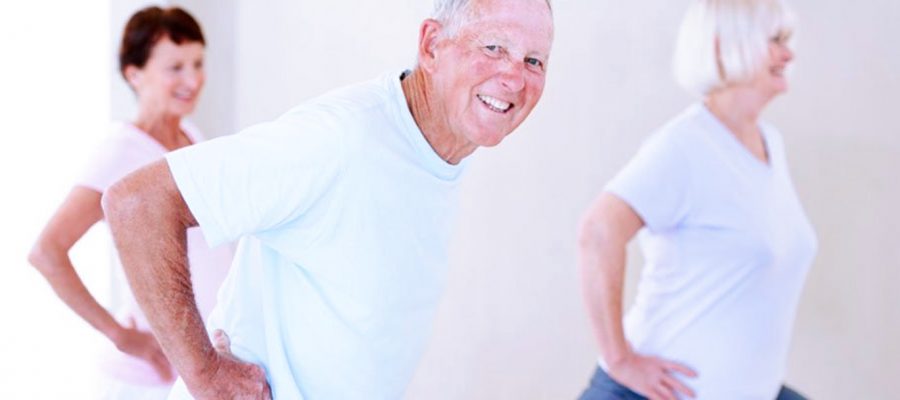 You could ask 10 people in a room to describe what yoga is, and without a doubt, you would hear 10 different descriptions. So let’s organize the landscape to figure out how and why you should give this ancient but trendy practice a try.
You could ask 10 people in a room to describe what yoga is, and without a doubt, you would hear 10 different descriptions. So let’s organize the landscape to figure out how and why you should give this ancient but trendy practice a try.
Taken to extremes, yoga in America today can seem downright exclusive, a past time for the fit and mobile. Sleek, sweating bodies extend long limbs and twist effortlessly into sacred shapes, seeming to hover above a shiny studio floor. Does that sound like a class you want to drop into next weekend? Probably not. But bypass the hype, the spandex and the gym rat feel of yoga as a workout and get to know “yoga for normal people,” including those who have pain with movement or pain from not moving enough – or both! That’s yoga for everybody and it should be easily accessible to anyone who wants to improve overall health and feel better every day. It is even available for people who are receiving in home care or long term care.
How can yoga improve health?
Here are a few of the basic reasons why a simple set of yoga postures and deep breathing can deliver concrete health benefits at any age, in nearly every stage of life, and especially for those in senior care…
- Breath expansion. In an earlier blog, we looked at the benefits of mindfulness as a practice to benefit overall health and well-being. If you were able to try out a few moments of breath awareness, then you have already experienced the first goal and benefit of yoga practice. Known as pranayama (which means “extension of the breath or life force”), simply deepening and noticing the breath is beneficial to health and well-being, before adding any physical movements. “Prana” is breath or life force, “ayama” is to extend or draw out. This reduces restriction of breath which contributes to the stress response cycle. And as a focal point for physical postures in yoga, breath awareness is an anchor that helps direct concentration and intensity of effort. (If breath awareness or ability decreases, lessen the intensity of effort or movement.) Research shows that yoga students report feeling more calm and centered, and that it can help with stressful moments and improve sleep.
- Grounding. Which means what? Part of beginning yoga involves creating awareness of our foundation, where we are connected to earth, floor or chair. Stabilizing foundation is central to balance and control and is the beginning of full body awareness. Research in this area shows that the use of an 8 week yoga program can reduce the risk of falls among older adults as they develop more muscle tone, better alignment and joint mobility. It is this physical improvement, combined with increased awareness that helps to preserve proprioception, the system of sensory receptors that provide feedback to the central nervous system about how and where we are oriented in space. This increased foundational awareness helps to maintain balance and control in older adults, which can increase safety at home and beyond.
- Movement. In our success oriented society, we seem to have engineered movement out of the mix. Everything is designed for (or encourages) sitting. Desk and computer work stations, commuting time spent in cars, leisure time designed around television and movie watching, even vying for the closest parking space wherever we go. America has developed a big bucket seat and it is not healthy. This is where yoga can reintroduce you to your body so you can take better care of it simply by moving more! Here are some chair yoga basics to get you started. But unless you are medically restricted from walking, soon you should look to progress out of the chair. Basic bone density and muscle tone require that we get up and use what we have. For those who struggle to complete Activities of Daily Living (ADLs), our care takers
- Mind Body Awareness. Sick of hearing this yet? Just like yoga, this idea probably has many different meanings. It is simply the combination of numbers 1, 2 and 3. By beginning with breath awareness, firming the foundation for stability and then mindfully moving, we are truly coming into one place, one unified place where body and mind are not two different ideas, but one.
Should I go to a class to learn yoga for improved senior health?
Attending a welcoming class, centered around people with similar abilities, is ideal and a great gift if you can arrange it. With experienced instruction and guidance, yoga practice can be safe and produce incredible benefits. Whether you are 20 or 80, you can find an appropriate yoga community. Attending a regular class is energizing in and of itself, and for many, the social aspect of attending class is an added benefit. Ask questions of a teacher or studio manager before you sign up so that you find the right yoga class.
But if that isn’t possible for you, digital classes are. You have many options for home practice, including internet streaming, downloads and DVDs. Many online memberships offer a wide variety of teachers and levels of practice. Peruse the options and keep trying things until you find the right fit. Youtube, facebook and other sites offer streaming instruction if you are ready for more.
One of the greatest health benefits of a regular yoga practice is a developing a sense of self-care, which permits us to make better choices for our health in every way. If we’re paying more attention to our bodies, maybe we’ll be a little nicer to ourselves, treat ourselves well, live in better health, and carry that well being as a gift to everyone we encounter. We hope you enjoyed this brief introduction to yoga, and see how it can benefit those of all ages! If you want to learn more tips to improve quality of life, please visit our blog, or contact Pennsylvania Agency of Nurses to see how we can assist your family today!
{{cta(‘7f7b325d-cc42-44a5-ad34-7f10f0d96c73’)}}








